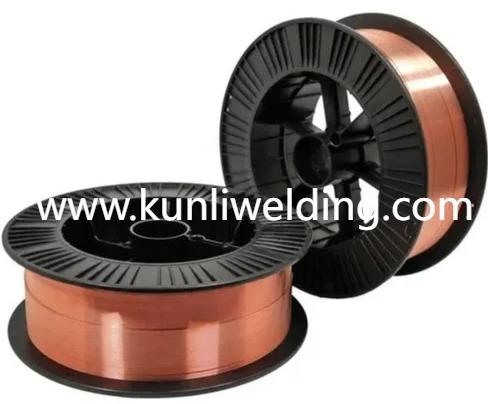When welders prepare for a MIG run on thin and medium thickness aluminum panels, Aluminum Welding Wire ER5356 often appears in material lists because of its balanced handling and post weld performance. This filler is frequently chosen where a combination of corrosion resistance and reliable joint behavior matters, and it pairs well with MIG workflows when the process is tuned for aluminum specifics.
MIG welding aluminum presents a set of familiar challenges compared with other metals. The oxide layer on aluminum demands current behavior that breaks through surface tension while avoiding excessive heat that can distort thin parts. Good wire feeding that avoids birdnesting and a steady travel motion help produce consistent beads. For ER5356 the emphasis is on uniform heat input and controlled deposition so that the joint retains service properties while the surface finish meets inspection or cosmetic needs.
Equipment choices influence daily results. A robust aluminum feeder or a spool gun designed to feed soft wire with minimal drag will reduce feed issues and downtime. Use contact tips and liners that match the wire dimension to keep arc stability steady. Shielding gas coverage should be even across the weld puddle to prevent contamination. Clean workspace practices such as removing grease and avoiding cross contamination from other metals contribute directly to reduced porosity and longer service life.
Technique matters as much as gear. A steady travel speed that allows consistent puddle travel and toe blending reduces repair work. Many fabricators find that short steady passes with light weaving when needed give a controlled weld profile without heavy heat concentration. Preparing joint geometry so the filler can flow and tie in without crowding the puddle simplifies the task for both seasoned operators and those newer to aluminum MIG.
Materials handling and storage also play a role in reliable outcomes. Keeping wire spools dry and protected from airborne contaminants preserves feedability and surface cleanliness. When teams combine disciplined storage with pre weld cleaning and test runs, the number of rejects tends to fall. This practical approach aligns with broader industry conversations about reducing waste and improving efficiency in fabrication shops and field installations.
Current shifts in manufacturing emphasis toward reduced weight and improved energy efficiency have increased the visibility of aluminum fabrication. As design priorities shift, ER5356 appears in a wider set of applications from vehicle structures to transportable equipment. That context encourages fabricators to refine MIG practice so that production speed and long term durability coexist in delivered assemblies.
If you plan to evaluate ER5356 for upcoming work, inspect product pages from reputable suppliers and request samples for trial welding under your shop conditions. Compare wire feed behavior, spool packaging, and any supplier guidance on process tuning. For detailed product information and to review ER5356 packaging and recommended handling notes, visit the Kunli product listing at www.kunliwelding.com . Their product page provides a starting point to match wire attributes to your equipment and application needs, and their team can help with follow up technical questions and ordering options.



